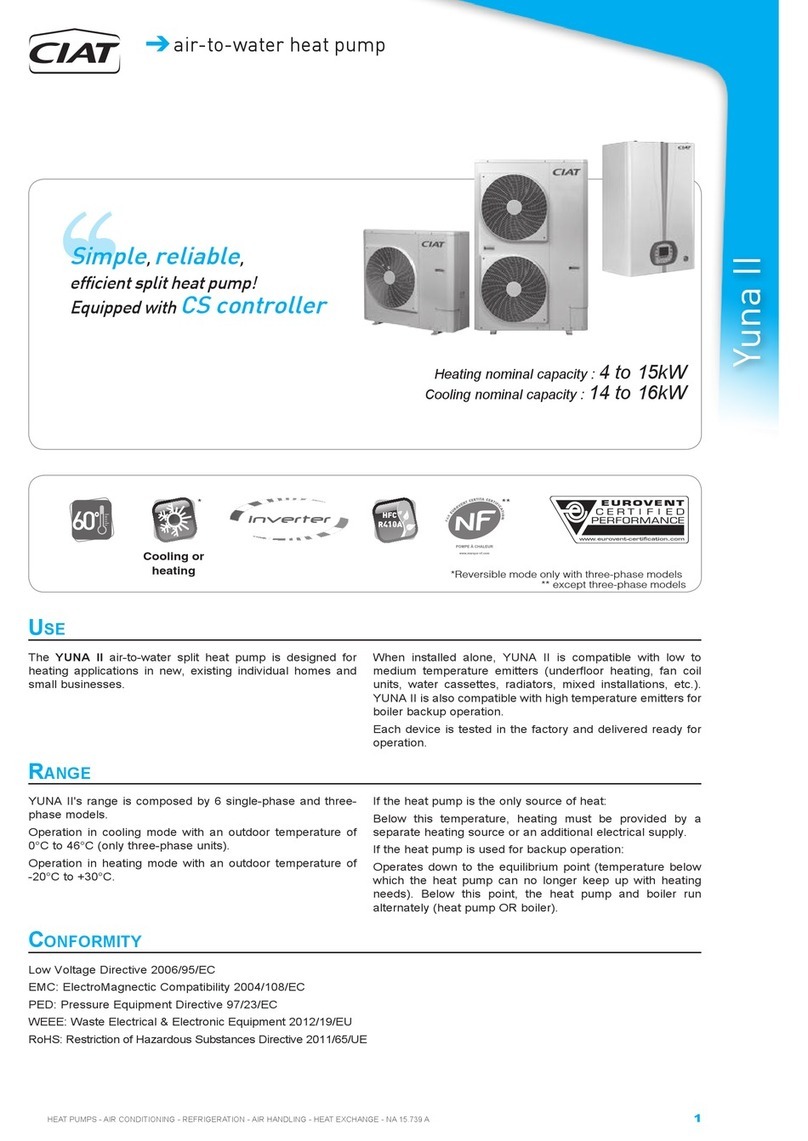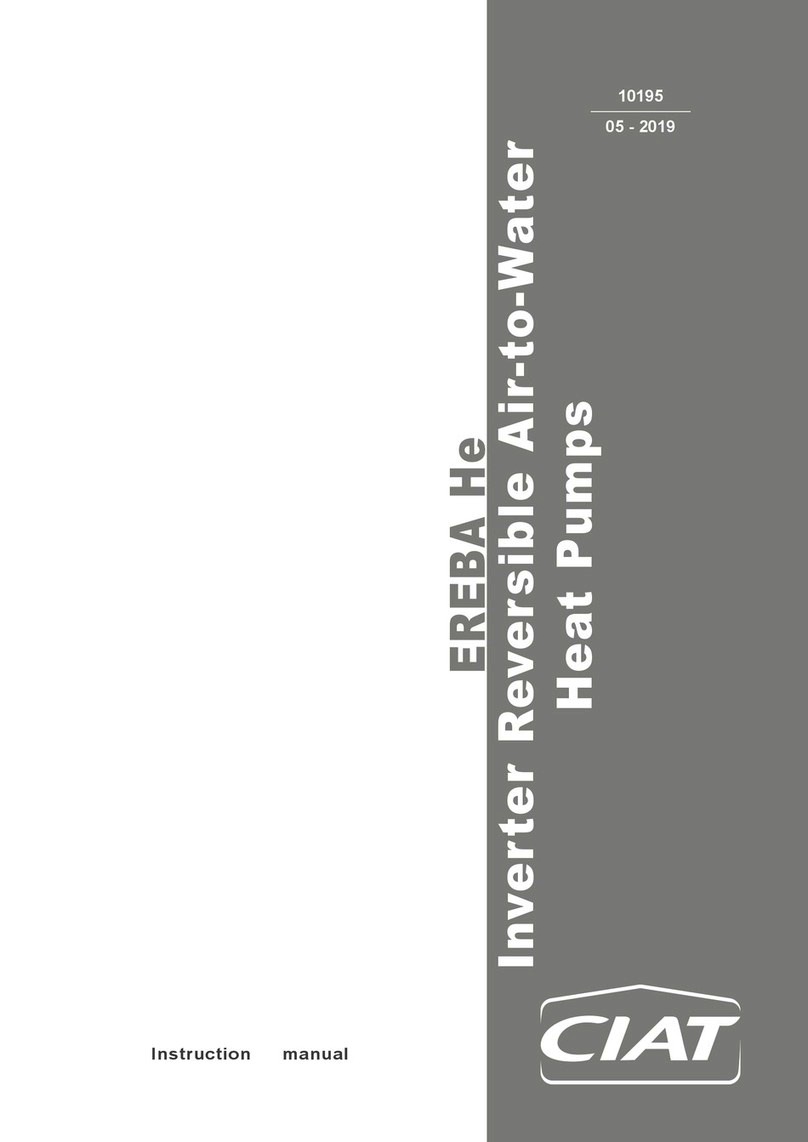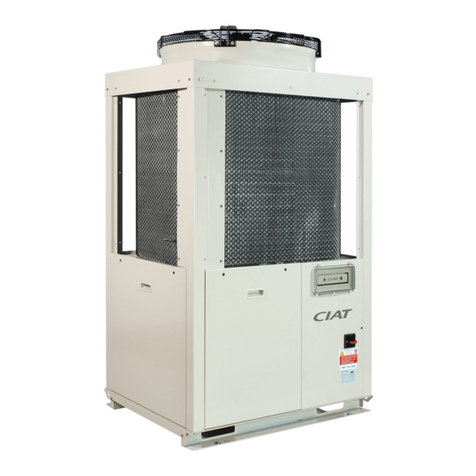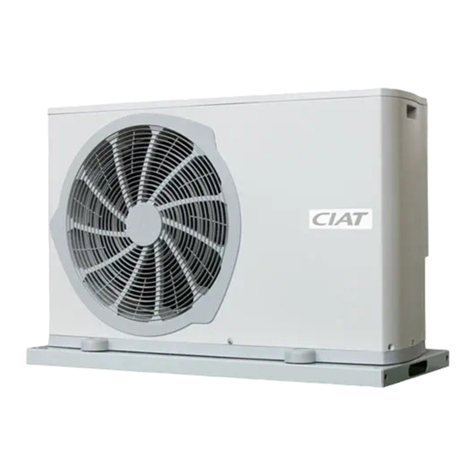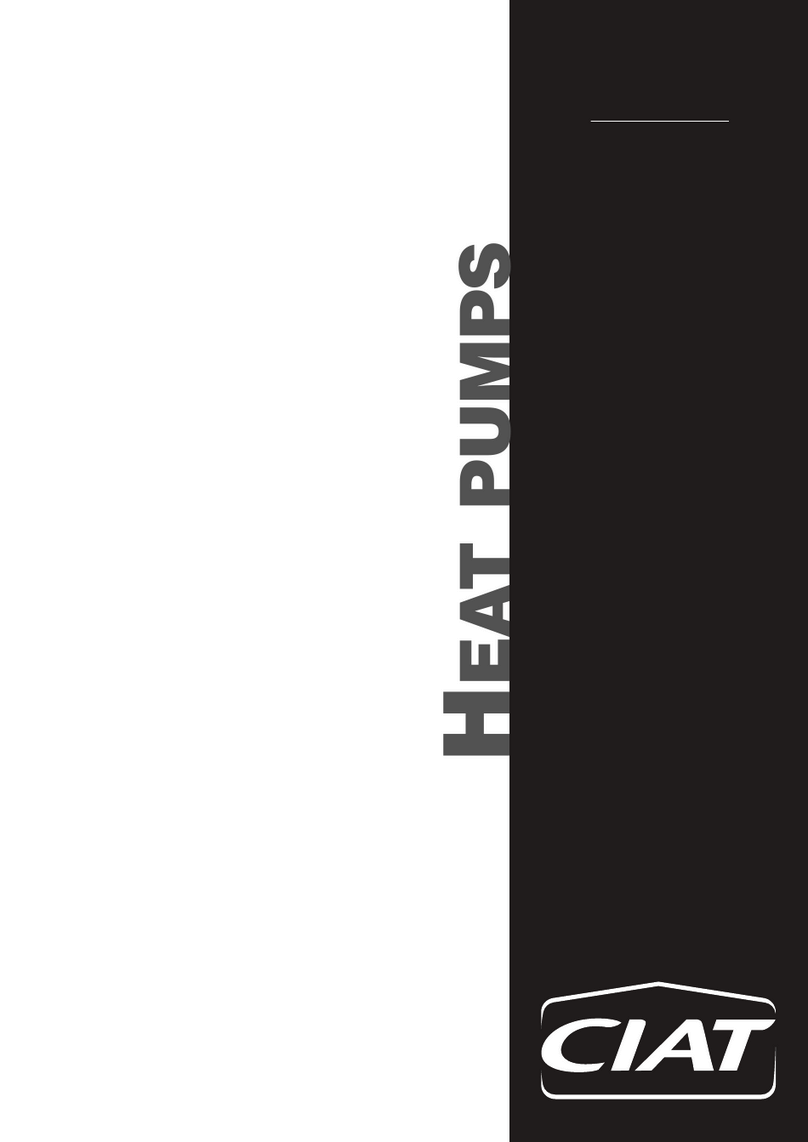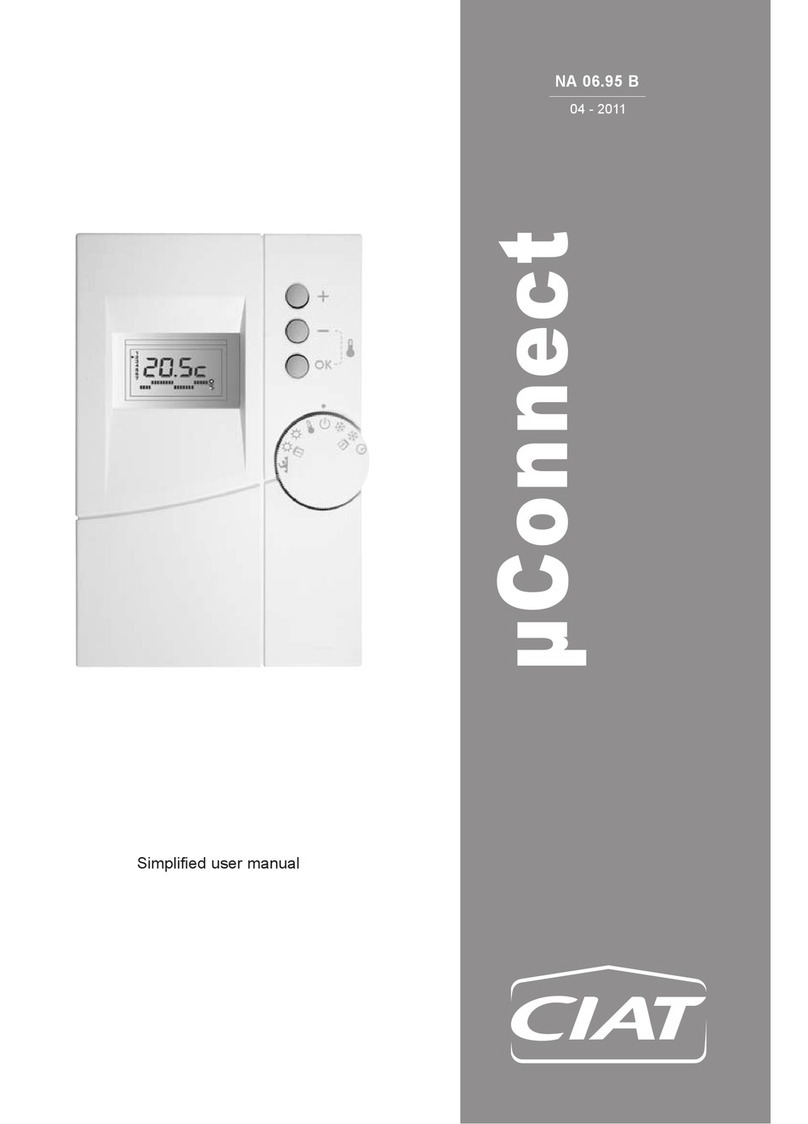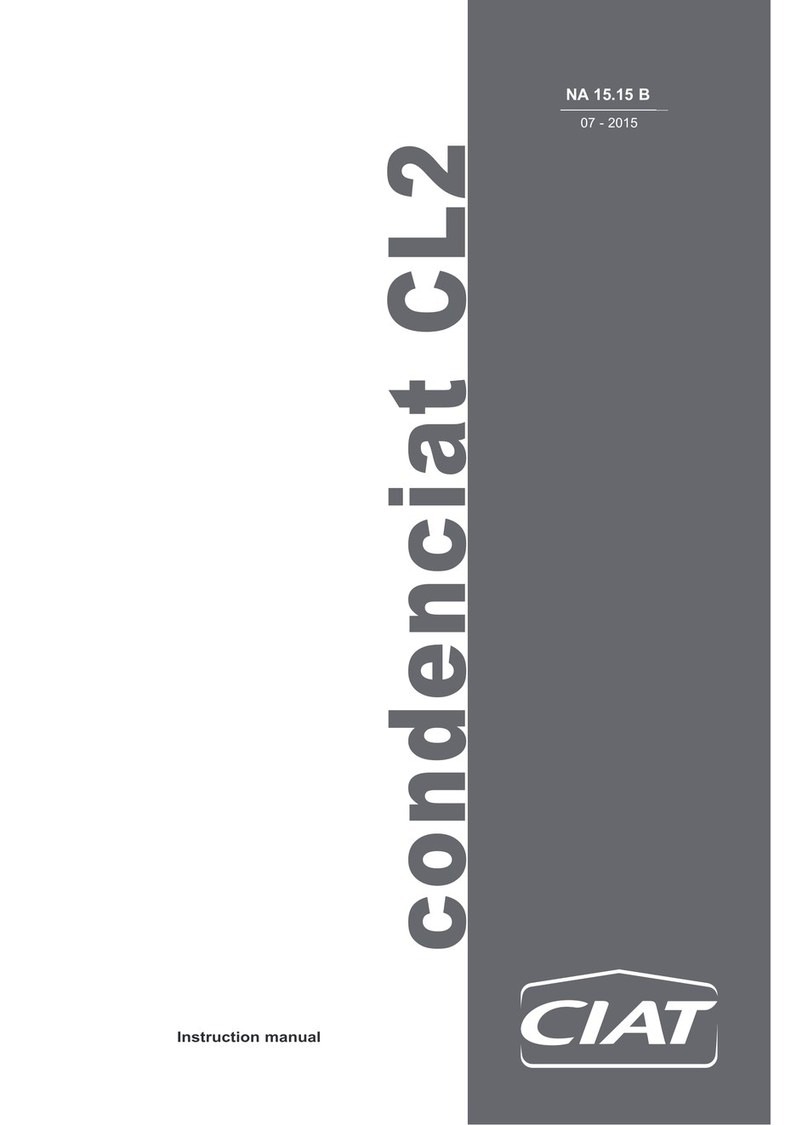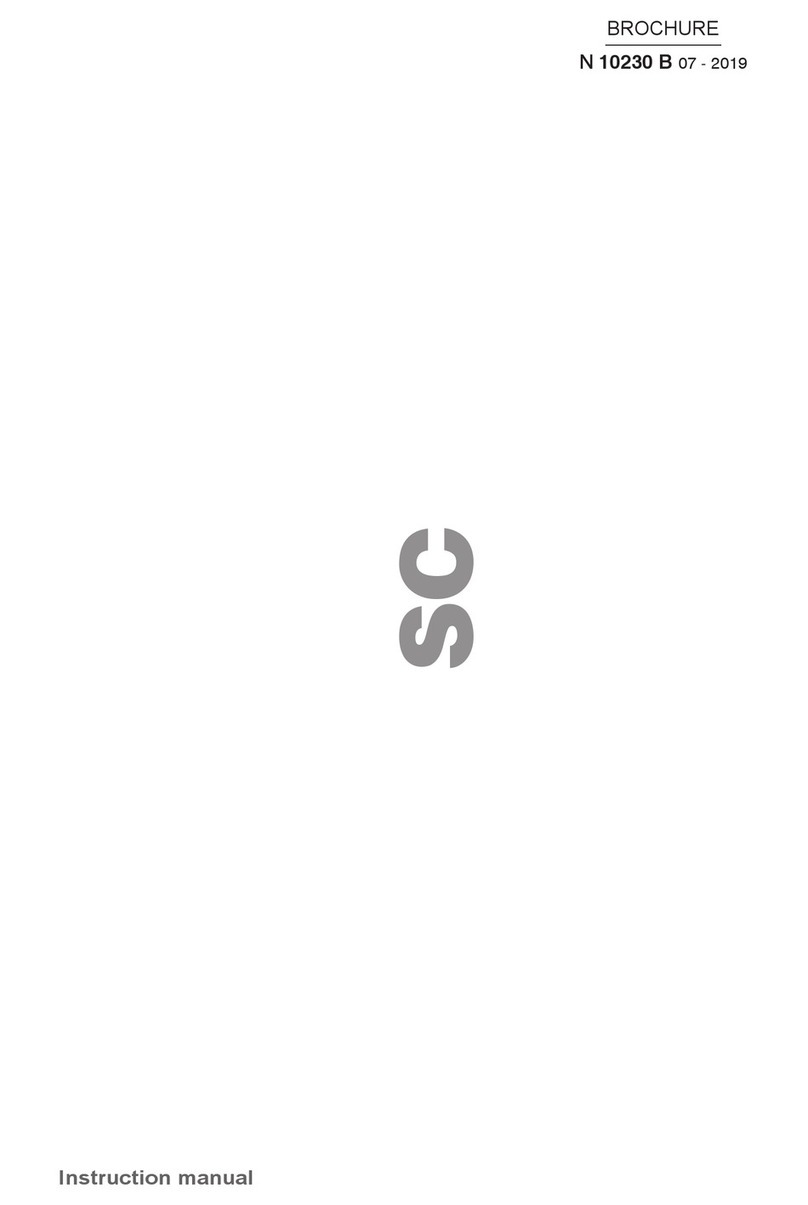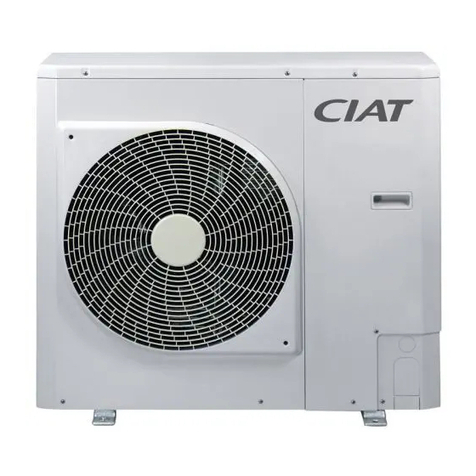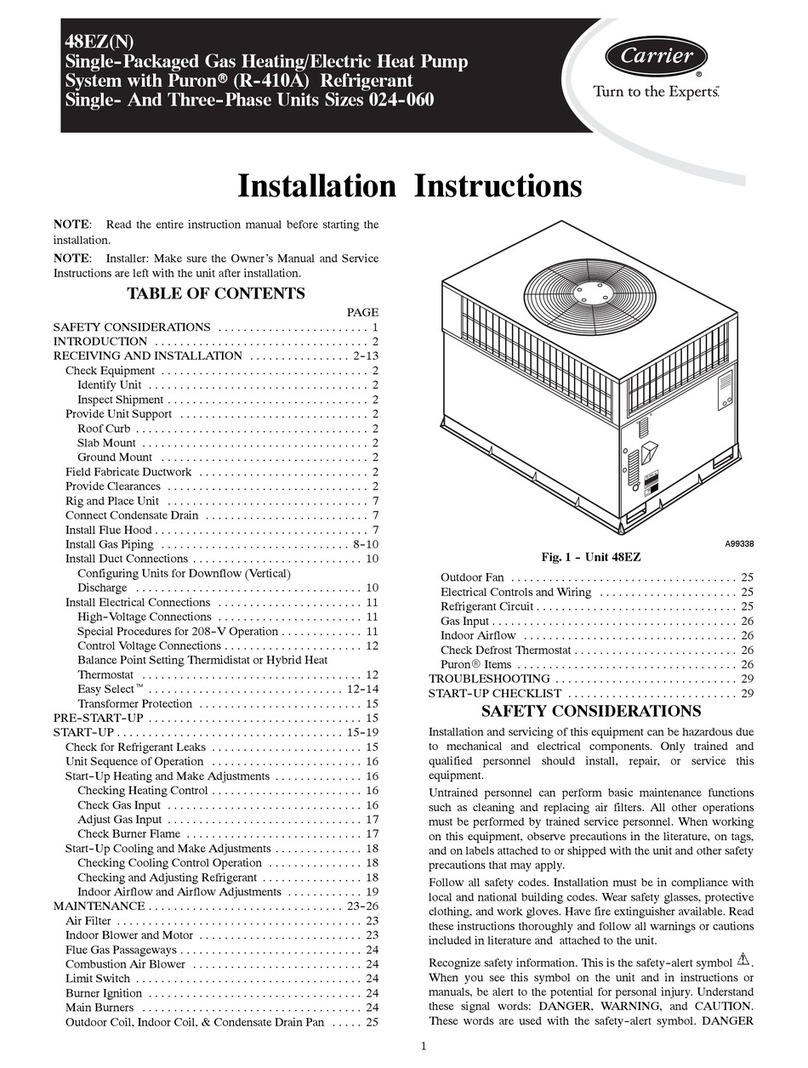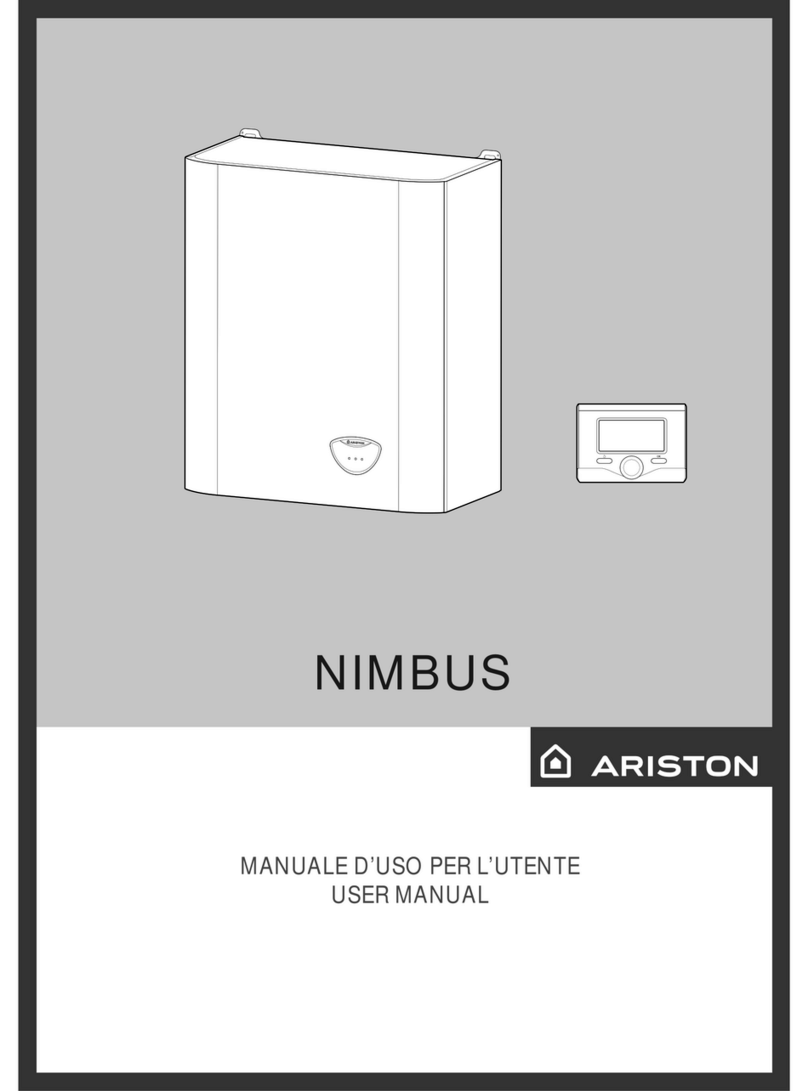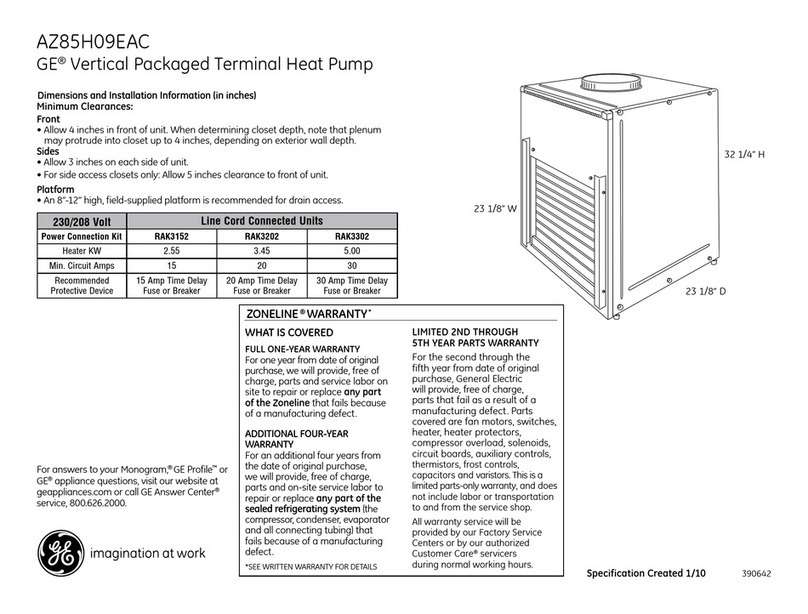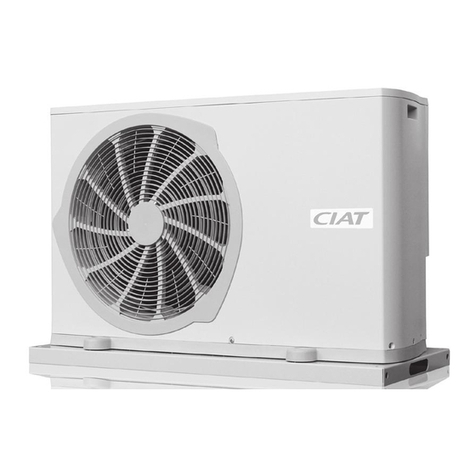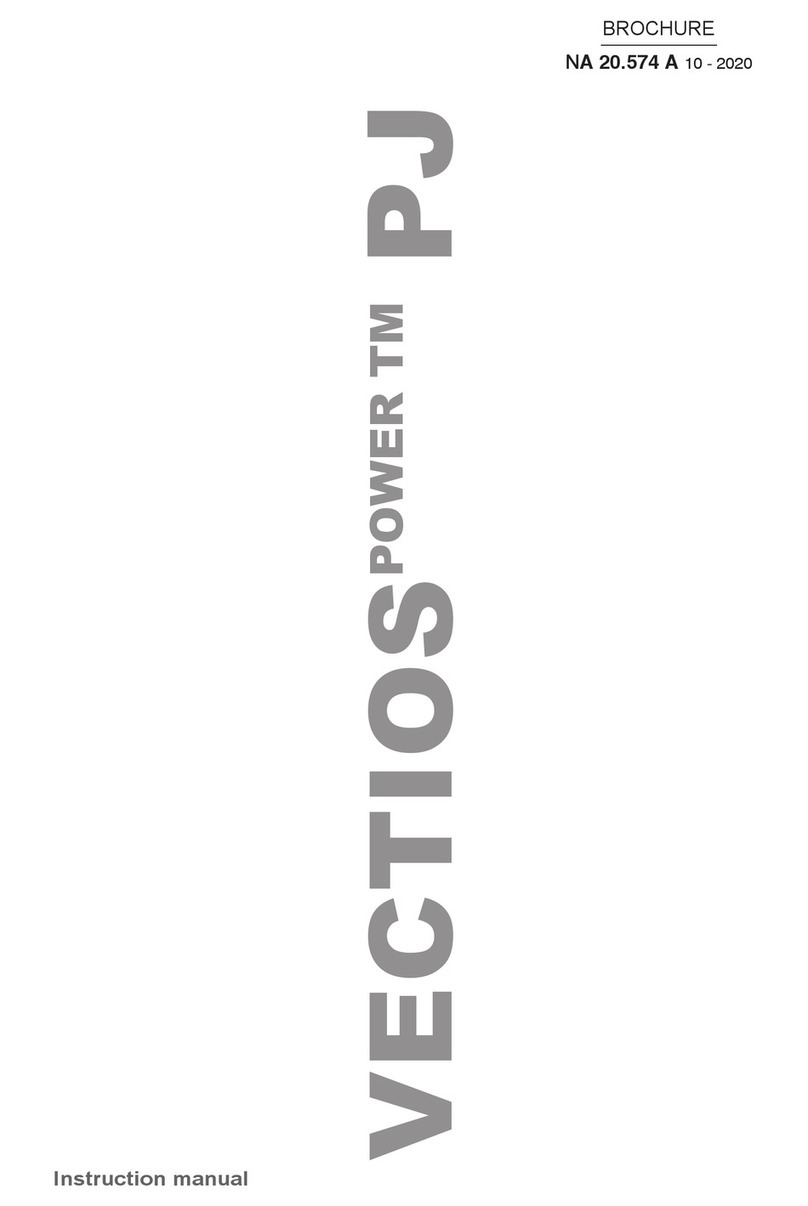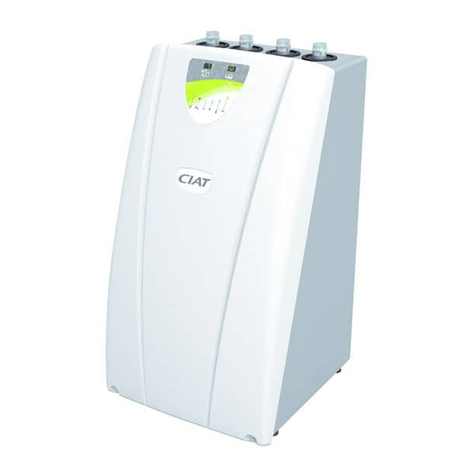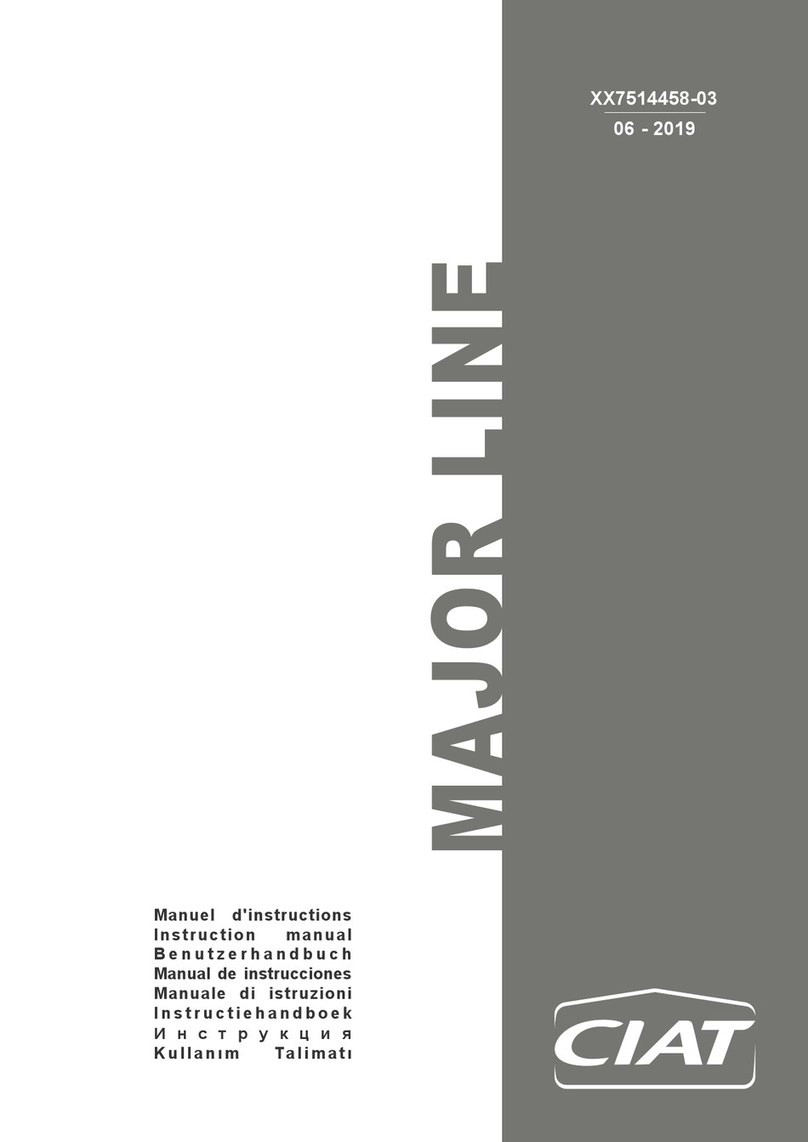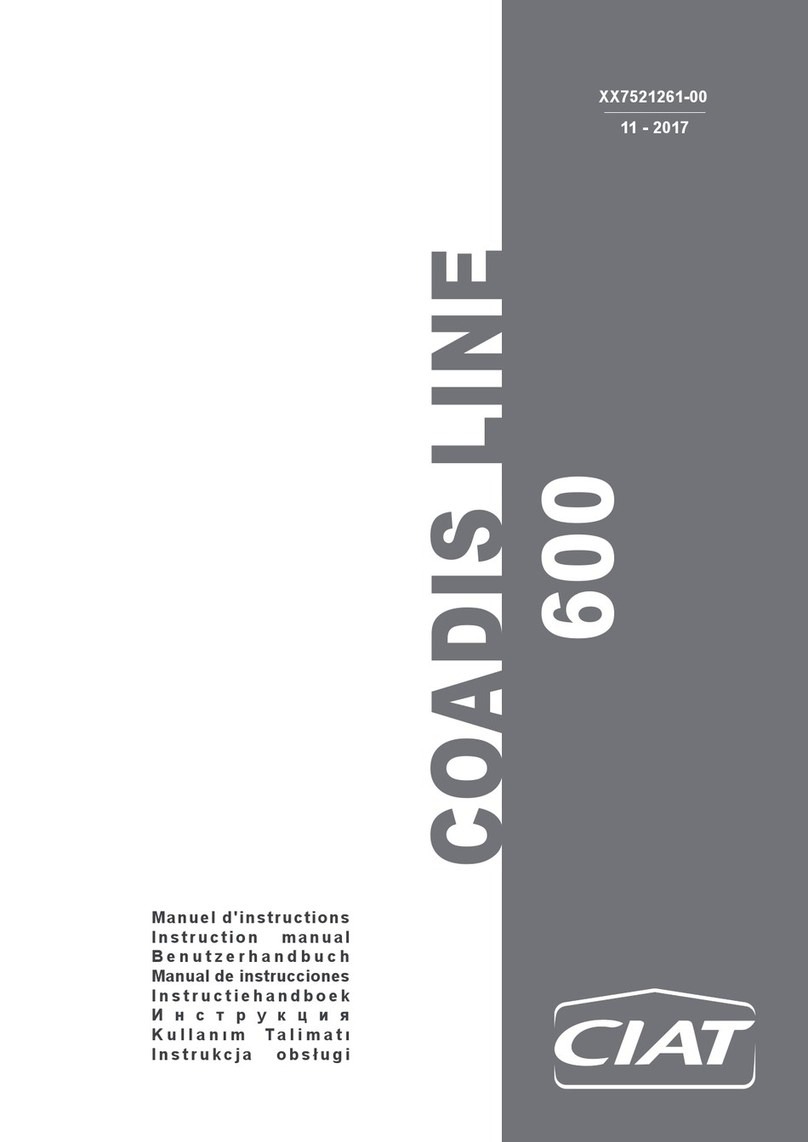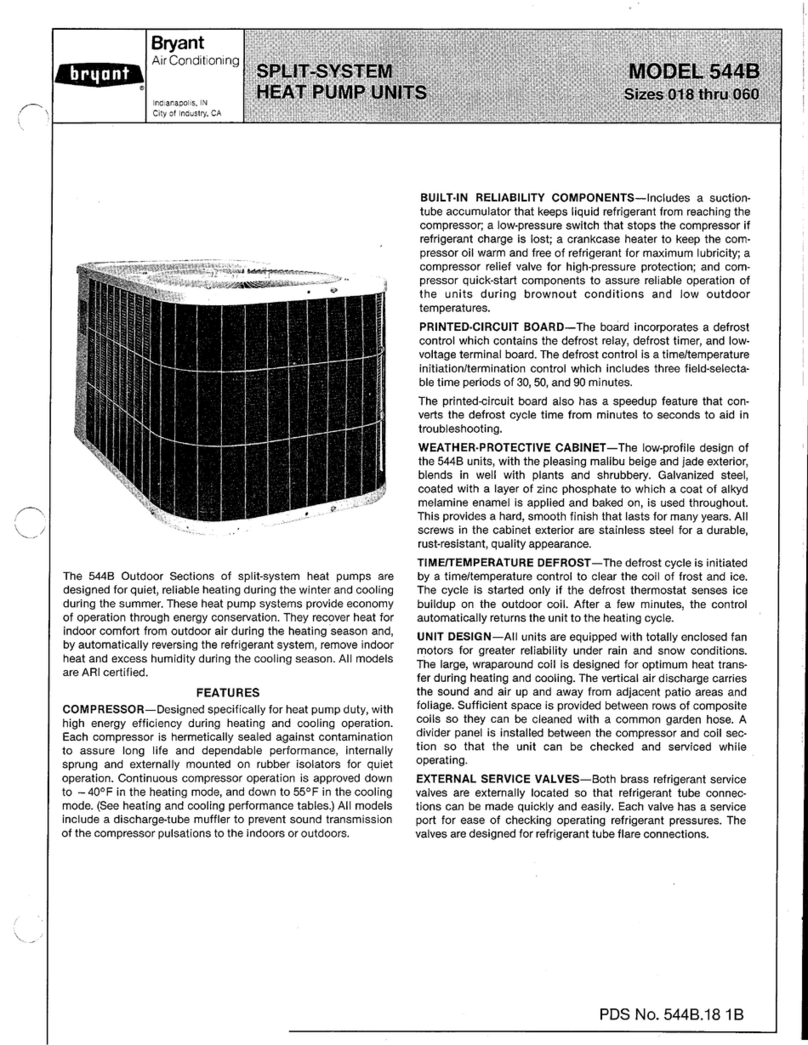
HEAT PUMPS -AIR CONDITIONING - REFRIGERATION - AIR HANDLING - HEAT EXCHANGE - NA 12.65 D
4
Horizontal package air conditionners
HCompact2 HA
3. TECHNICAL CHARACTERISTICS (EN-14511-2013)
HCompact2 HA 55 65 80 90 120 160
Cooling
capacities
Cooling capacity (kW) 12,5 15,3 20,1 21,5 27,1 35,9
Power input (kW) 5,2 6,6 7,4 8,5 11,0 15,4
EER performance 2,38 2,30 2,70 2,53 2,47 2,33
Heating
capacity
Heating capacity (kW) 14,2 16,9 21,1 23,1 30,5 41,0
Power input (kW) 4,8 5,7 6,4 7,4 9,3 13,3
COP performance 2,93 2,96 3,29 3,13 3,28 3,10
Outdoor
circuit
fan
Nominal air flow (m3/h) 4.100 4.600 6.500 7.000 10.000 12.200
Available static pressure (mm.w.c) 9 9 10 10 12 12
Type Centrifugal
Number 1
Motor output (kW) 1,1 1,5 1,5 2,2 2,2 3,0
Power input (kW) 0,77 1,01 1,14 1,33 1,37 2,03
Speed (r.p.m.) 1.125 1.207 828 859 589 630
Indoor
circuit
fan
Nominal air flow (m3/h) 2.500 3.100 4.000 4.600 6.000 7.000
Available static pressure (mm.w.c) 5,0 5,0 6,2 6,2 6,2 7,5
Type Centrifugal
Number 1
Motor output (kW) 0,55 1,1 1,1 1,5 1,5 3,0
Power input (kW) 0,35 0,63 0,67 0,94 1,20 1,94
Speed (r.p.m.) 1.115 1.340 1.051 1.150 988 1.168
Compressor
Type Scroll
Compresor number 1
Circuit number 1
Oil type Copeland 3MAF 32cST, Danfoss POE 160SZ, ICI Emkarate RL 32CF, Mobil EAL Artic 22CC
Voulme of oil (l) 1,6 1,6 1,6 3,0 3,3 3,3
Electrical
characteristics
Electrical power supply 400 V / III ph / 50 Hz (±10%)
Power supply 3 Wires + Ground
Maximum
absorbed
current
Compressor (A) 15,0 19,0 19,0 22,0 29,0 35,0
Outdoor fan (A) 2,7 3,6 3,6 5,0 5,0 6,9
Indoor fan (A) 1,6 2,7 2,7 3,6 3,6 6,9
Control (A) 2,0 2,0 2,0 2,0 2,0 2,0
Total (A) 21,3 27,3 27,3 32,6 39,6 50,8
Refrigerant
Type R-410A
Global warming potential (GWP) 2.088
Charge (kg) 2,5 3,0 4,5 4,9 5,0 6,2
Environment impact (t CO2e) 5,2 6,3 9,4 10,2 10,4 12,9
Dimensions
Length (mm) 1.420 1.420 1.760 1.760 2.300 2.300
Width (mm) 1.065 1.065 1.414 1.414 1.820 1.820
Height (mm) 576 576 701 701 824 824
Weight (kg) 245 253 332 375 472 521
Ø Condensate evacuation 3/4”
Cooling capacity calculated in accordance withthe EN-14511-2013 standard given for indoortemperature conditions 27ºC, 50% RH and 35ºC outdoor temperature.
Heating capacity calculated in accordance with the EN-14511-2013 standard given for indoor temperature conditions 20ºC and 6ºC WB outdoor temperature.
Total power input by compressor and motorised fans under nominal conditions calculated in accordance with the EN-14511-2013.
Climatic warming potential of a kilogram of fluorinated greenhouse gas in relation to a kilogram of carbon dioxide over a period of 100 years.
